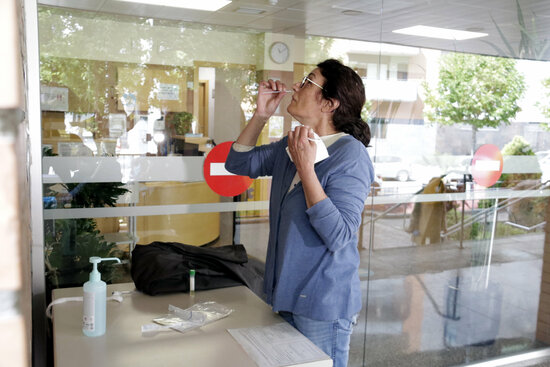Covid transmission rate sees increases for five days straight
R number now stands at 0.86 after dropping as low as 0.74 last week

The Covid-19 transmission rate has risen gradually over the last five days, two weeks after the end of the state of alarm.
Yet, the important pandemic indicator still stands below 1, the level that would seriously concern authorities. As of the latest Covid-19 data released on May 23, the R number in Catalonia is 0.86. According to data released by Catalan health authorities on May 19, the metric was 0.74.
Since the end of the state of alarm in early May, there has been no nightly curfew in effect in Catalonia, a measure that had been in force for the prior six months.
Large crowds have been seen in beaches, squares, and other public meeting points over the last couple of weeks, as revellers enjoy the loosened restrictions.
Outbreak risk
The outbreak risk indicator has also seen significant declines in the past weeks, giving support to the idea that the pandemic is coming under control.
Two weeks ago, it had moved from the threshold of 'very high' to 'high' for the first time in two months.
The limit for 'high' risk is above 100, and 'very high' from 200. Data read on May 24 showed the outbreak risk was 111, the same as the day before.
Using the iEPG index, the outbreak risk is calculated by multiplying the average spread of the virus over the past seven days by the cumulative incidence over the past two weeks.
Hospitalizations
The number of hospital admissions for Covid-19 in Catalan hospitals has also increased for the second day in a row after days of significant declines.
There are now 870 patients hospitalized, 13 more than the day before. The number of patients in intensive care units continues to decline, however, and is now 306 - 9 fewer than the day before.
The 14-day incidence rate, the figure of new coronavirus cases per 100,000 population, has seen steady decreases for weeks and now stands at 129.55.
Vaccination rollout
The gradual progress of the vaccine rollout plan has allowed for the loosening of measures in the last couple of weeks such as lifting the nightly curfew and allowing bars and restaurants to stay open until midnight.
Currently, people in their 50s are being offered jabs. Health authorities expect to start offering the coronavirus vaccine to people aged 40-49 by mid-June, and to reach all the population under 40 years old by July.
As of May 23, 2021, 2,711,651 residents have been given the first dose of the vaccine, 34.7% of the total population. Out of those, 1,168,000 have also been administered the second dose (14.9% of the total population). 1,252,660 residents are considered to be fully immunized (16%).
This week, FC Barcelona’s Camp Nou stadium will begin to be used as a mass vaccination site as Catalonia ramps up its inoculation efforts.
The iconic football stadium will have the capacity to administer 2,500 jabs per week in four booths, with the Catalan capital's Hospital Clínic in charge of the site, along with the primary care centers CAPSBE and CAP Sarrià.
On March 23, the Catalan health minister, Alba Vergés, presented a plan with a network of 500 mass vaccination sites across Catalonia to cope with up to 500,000 doses a week.